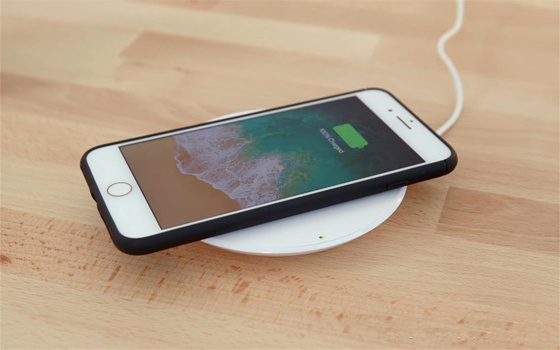
The so-called wireless charging, as its name suggests, is a technology that achieves power transmission wirelessly. Unlike regular charging of a power cord to a mobile phone, it simply charges the phone by simply placing it on the charging dock. As shown in Fig. 1, "the magnetic flux is generated by the alternating current flowing through the coil of the charger (electric power output side), and the magnetic flux is connected to the coil of the smartphone (power receiving side), and the induced current flows." Using such an electromagnetic induction principle Charging.
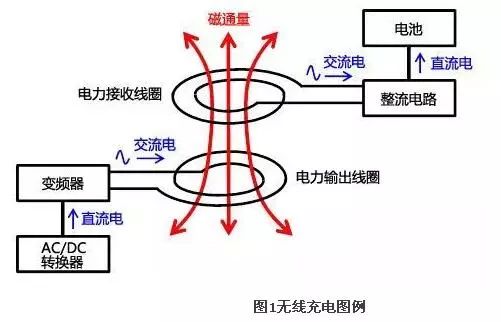
What are the challenges faced by Q wireless chargers? In the era of high energy consumption of smart phones, it is still very good to have a wireless charger as a peripheral mobile power supply. However, in terms of technology, this power adapter is still in the development stage. For wireless charging technology, it faces What are the problems?
First, the interference problem, we usually have this experience, when the phone is placed next to the computer or TV, if there is a text message or a phone call, the computer or TV screen will be interfered. If you put the wireless charger in the room, will it interfere with many household appliances? Second, the efficiency problem, the practice has proved that the conversion rate of wireless charger charging is much lower than that of the wired charger. At present, the highest can only reach 85%, which is also a kind of energy waste. So the use of technology, there is room for improvement. Third, the cost problem, after all, wireless charging technology is a long-established technology, but it is still a new thing to apply to charging. Wireless charging includes power management modules, transmitting circuits, receiving conversion circuits, and charging circuits, and it also involves a lot of patent fees, which must be higher than the currently widely used wired charging and universal chargers. Fourth, the limitation problem, for now, the wireless charger can not reach the coverage of the wireless network, although the charging board and the receiver are two parts, but they can not be separated too far from each other, otherwise the charging efficiency will be greatly reduced. It can't even charge. Fifth, the radiation problem, now people talk about radiation color change, wireless charging due to the existence of the inductor coil, will inevitably generate magnetic line radiation, but in terms of current radiation, the current wireless charger basically rectifies the alternating current after conversion to direct current, and the power pole Small, so the issue of radiation is still the most concerned aspect of people.
I believe that with the advancement of technology in the future, the above problems faced by wireless chargers will be solved, and real-scale production and application will be realized. At present, all major charger manufacturers are fully prepared for manufacturing. What noise problems will the Q wireless charger generate? In the wireless charger, as shown in Fig. 2, the radiation emission (the noise released into the space) becomes larger in the low frequency band lower than 100 MHz during charging, 2 the television or audio is played during the charging, and the data communication is received. The sensitivity is degraded and both noise problems occur. Single-segment playback during charging cannot receive signals, cannot answer incoming calls, and cannot receive text messages.
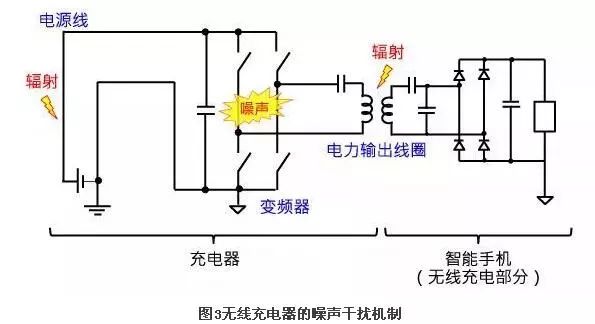
What is the noise interference mechanism in the Q wireless charger? The A noise source comes from a frequency converter that is driven at approximately 100 kHz. This harmonic component exists around 1 GHz and causes various noise problems. In addition, the noise radiated from the power line end is observed as radiation, and the noise radiated from the power output coil and the antenna of the smartphone cause a phenomenon in which the receiving sensitivity is suppressed. Q What kind of noise countermeasures are effective in the wireless charger? The basis of the A noise countermeasure is to suppress the noise before the noise generated by the noise source reaches the antenna that easily radiates noise. If it does not leak, even a wireless charger can achieve the effect of reducing the amount of radiation by inserting a common mode choke (CMCC) at the bottom of the power line. Insert a low ESL capacitor and a common mode choke before the power output coil. Achieve improved reception sensitivity.
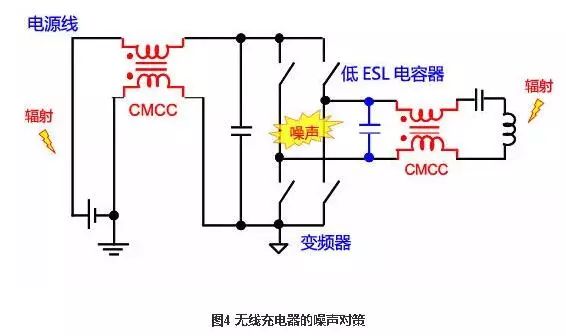
The specific improvement effect is shown in Figure 5 and Figure 6. By inserting a common mode choke at the bottom of the power line, the amount of radiation can be reduced by about 20 dB, which is clearly stated in the CISPR22 regulations. In addition, by inserting a low ESL capacitor and a common mode choke in front of the power output coil, the receiving sensitivity is improved by up to 13 dB, which is almost the same as when the battery is not charged.

Q talk about technology, market and industrial chain? The principle of A is simple, and the method of wireless charging is difficult . In the experimental stage, many methods have been developed, but at present, the only opportunity for mass production is commercialized as coil induction. The principle of coil inductive is very simple. It was discovered physically a hundred years ago, but in the past, such coil induction has only been used in wound-type transformers. In the early days, it was discovered that the winding of the "E" type core of the winding type transformer can be inductively transmitted after being aligned and then connected to the listed electric power. However, the sensing effect disappears after the distance is slightly separated. At 60 Hz, electromagnetic wave transmission will rapidly decay with increasing distance. In today's applications, since the device itself needs to be packaged in the outer casing, the thickness of the transmitting end plus the receiving end is at least 3 mm. When the early electric toothbrush product was developed, it was found that the operating frequency of the coil needs to be increased after the distance is opened. Power can be transmitted farther; there is a characteristic in electromagnetic waves that electromagnetic waves with higher frequencies can transmit longer distances and have lower energy attenuation.
Later, RFID applications began to develop, mainly in the three bands of LF low frequency (125~135KHz), HF high frequency (13.56MHz), UHF ultra high frequency (860~960MHz), and these bands also made the current wireless power. The reference point used by the system at the beginning of the design frequency. As early as 10 years ago, wireless charging of electric toothbrushes was already on the market. At that time, the transmission power was small and the charging time was long. In the current power consumption situation of smart handheld devices, the charging energy at that time was not enough, so it was not practical for 10 years. Turn. However, in the past few years, new technologies have been developed that can use higher "resonance" receiving efficiency. Because this technology is relatively new, there are many sayings from all walks of life, but there is a very important feature that there is a configuration capacitor on the receiving coil. To form a receiving antenna with frequency characteristics, a large power shift can be obtained at a specific frequency. This part is different from the early electromagnetic induction. When the distance is pulled apart, good power transmission can still be obtained. The principle of resonance is very simple. Just like a piano tuner, you can put a glass with different water volume. Under precise tuning, you can shake a glass through resonance. But other articles don't mention it. Ordinary people who have not been trained by a professional piano tuner may never be able to adjust the frequency at which the glass can be shattered! This is a simple principle and difficult to implement.
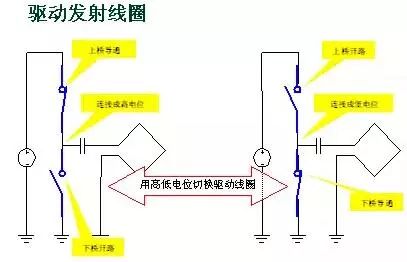
The display is simple, and the electronic parts that are difficult to market are like an unadjusted piano. The piano can be issued with high-quality sound after precise tuning by a professional tuner. When it is mass-produced, it may not be possible for cost considerations. A product is re-shipped by a professional, and it will be difficult if every product has to be corrected by a professional because there are limited professionals. This is similar to the fact that many wireless charging products have been published for a long time. The products can be perfectly performed at the press conference, but after a long wait, I have not seen the product listed. Just like the example just mentioned, wireless charging products must be precisely tuned in order to achieve a good resonance effect, and mass production will become very difficult under such conditions. Therefore, the design of the wireless charging system must first be able to adjust itself to the resonance part, so as to solve the mass production problem. In 2008, INTEL released two coils that can be separated by one meter to transmit power to illuminate a 60-watt bulb. The announcement also announced that the era of wireless power has arrived; but three years later, the related products are still not listed, think carefully It can transfer power one meter away. This powerful electromagnetic energy will have no effect on the human body and will have a very large lethal effect on the surrounding electrical products. The principle of the wireless power system is the same as that of the cooking induction cooker. The electromagnetic wave transmits energy only by the target. The induction cooker uses the frequency of about 50KHz and sends it to the cooker for heating. In the past, there was a video on the network that was put on the mobile phone. On the surface of the induction cooker in operation, the mobile phone is burned in a short time. The principle is that electromagnetic waves will directly pass through the outer casing of the mobile phone to heat the internal metal structure until it burns.
As mentioned in the previous article, in order to lengthen the transmission distance, it is necessary to increase the transmission frequency. The frequency of the induction cooker is lower than the safety limit after leaving a few centimeters. The transmission of one meter away from INTEL must increase the frequency to about 13 MHz to transmit. Under this condition, if there is a metal object between the coils, it will be heated and dangerous. In the performance, the staff can stand between the two coils without danger. The reason is that the metal content in the human body is small, so the temperature rise is limited. When the electromagnetic wave frequency is increased above 1 GHz, the water molecules are directly heated; this principle becomes a microwave oven, and the water molecules are excited by electromagnetic waves to generate heat. Therefore, the microwave oven is different from the induction cooker and must be operated in the shield to avoid harm to the human body. This part is different from the wireless communication products on the market, because the energy gap is very large; the wireless power system needs to transmit power and send it to the power receiving device, so it needs high power transmission, and the wireless communication product receives the low power signal and then passes through the internal The battery will amplify the signal. Therefore, whether it is heating at 13MHz or directly harming the human body above 1GHz, wireless power must be solved in order to solve the safety problem. This is simple display and difficult to market.
Three performance indicators: efficiency, safety, and power Electric toothbrushes were stacked wirelessly 10 years ago. At that time, due to low power requirements, efficiency and safety were not considered. The early system conversion efficiency was only 20%-30%, and there was no safety mechanism and it would not recognize the target continuous power supply. Such a system is the same as the micro induction cooker. Since the power is very small, the receiving demand is only 0.1W up and down, and only 20% of the conversion efficiency is 80% of the energy transferred to the heat dissipation, so that the estimated transmitter provides 0.5W of energy to the receiver with 0.1W of energy. The heat generated by 0.4W is not obvious to the temperature rise of the system, and the maximum output capacity of the system is not too large, that is, 0.5W, so there is no danger of placing metal foreign objects on the transmitter; but today's device demand is much higher than 0.1. W, from the hot-selling smart phone, it takes 5V-1A or 5W of charging energy. If the system is designed with electric toothbrush, the problem will be great. The demand of 5W at the receiving end is only 20% conversion efficiency. 20W of energy is converted into heat dissipation. This kind of energy will generate huge heat energy, which will cause the system temperature to rise sharply. Under such calculation, the maximum output capacity of the system will be 25W. If the metal is placed on the transmitter for unsafe design. Foreign objects can cause fire accidents, so the problem that arises after the increase in power demand requires a new design to complete wireless charging, so the wireless charging that appeared 10 years ago has changed. Being. In order to achieve the target power, the newly designed system must first solve the problem of efficiency and safety. High conversion efficiency depends on advanced specifications. Parts and materials Today's wireless charging systems are designed in a resonant manner. The architecture is as large as the following:
1. DC power input 2. Frequency generating device 3. Switch to switch power 4. Transmitted coil and capacitor resonance combination
Inside the receiver
A. Received coil and capacitor resonance combination B. Rectifier C. Filter and regulator D. DC power output
In the same architecture, from the DC input of the transmitter to the receiver D. Every link that the DC power supply should pass is the point of efficiency loss. Every part with impedance characteristics that the current passes through in the power circuit will In the above part of the loss of energy, the advancement of materials in recent years has also greatly increased the practical use of wireless charging. Several advanced parts are related to transmission efficiency in wireless charging systems. In order to achieve high conversion efficiency, these parts need to be Materials are used in combination.
a. Frequency Generating Devices: Several companies have developed this part into IC sales, which are key components on the transmitting circuit board. b. Switching power switch: Mostly composed of MOSFETs, low on-resistance and high switching speed are the main points of choice. c. Transmitting/receiving coil and capacitor resonance combination: This part is a technology that has never appeared in the past. Because of the irregularity, it can only be tried continuously, and it has not blocked more energy from scattering to other places. The magnetic material is applied to the uninducted side of the coil, and the material properties of this type are also new applications. d. Rectifier: Since the operation on the coil is high frequency, high voltage energy signal needs to be effectively replaced by DC power to be used by the power receiving device. At present, most of the ultra-low VF Schottky diodes are used. e. Filtering and Voltage Regulator: This part of the difficulty is limited in the space of the receiving device, and it is difficult to miniaturize the design. Generally, the circuit with high conversion efficiency is equipped with a large volume of passive parts.
The hardest part of the design is safety. It has been mentioned that the wireless charging system emits electromagnetic energy like the induction cooker. There are two major problems: one is to emit energy when the target is not on the transmitter, and it will be used for a long time. The waste of energy is not in line with the current trend of product energy conservation. Another problem is more serious. When the metal object is placed on the transmitter, the electromagnetic wave heats it; if this condition is light, the device is burned, and in the event of fire, the life and property of the person is dangerous. Therefore, if the wireless charging system is to be sold on the market, it must have an important function that is “recognition of the target of the receiving endâ€. When the correct target is placed on the transmitter, the power transmission starts. If not, the power is not transmitted. There are many ways to detect close-range devices, but one problem with wireless charging systems is that you can't use expensive parts to do this. Remember that the current design is just a charger. If the cost is too high, the market will not be able to. Accept this feature.
There are currently two practical ways to accomplish this: 1. Magnetic activation: A magnet is placed on the power receiving end. When the transmitting end senses the magnetic force, it starts to send energy. This method is simple and effective because no one will inadvertently put one. The magnet burns it on the emitter. 2. Data transmission on the induction coil: This is the safest method currently considered. It is the same as the principle of RFID. It uses the power transmission in the two coils, including the data code to transmit together; this method is the safest and most difficult to complete. Because of the high-energy power transmission on the induction coil, and the interference of the system noise and load current changes, how to effectively transmit the data code is a big problem.
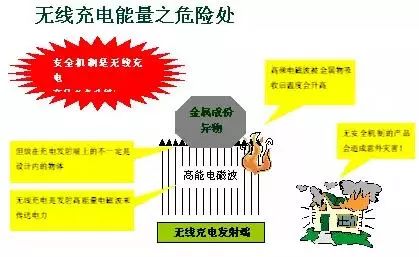
The variable power system needs to be built on the data transmission mechanism. An ideal system is to place different receivers on the wireless charging transmitter. The receiver can be used for different devices from small power headphones to high-power notebook computers. Can correspond to different targets; but the power demand of each receiving device is different, then the transmitter must automatically adjust the power output. However, such a function should be established in the transmitter and receiver to be able to transmit data codes to communicate, so how to use the coil of inductive power for data transmission is the key point of research and development. A number of companies have been involved in the development of this technology a few years ago, and the stability of each company's methods in practice is also verified. The wireless charging common standard is ideal but it is difficult to achieve the current wireless charging standard. The ideal standard is that it can be used across brands.
This is a very ideal goal. The so-called standard requires two specifications to operate. The first is to have a common resonant frequency. The power transmission needs to be transmitted through a preset resonant frequency. The frequency of the electromagnetic wave energy provided needs to be the resonant frequency of the receiver in order to obtain good conversion efficiency. The second is the standard data transmission code or other identification activation method. The transmitter needs to correspond to the correct receiver to start power transmission. A common standard is indeed what the market expects. At present, the group that promotes wireless charging standardization has been operating for a long time, but the products on the market are still rare. This part can be found in depth and some problems can be found. The standard is not yet complete, so the developer can not complete the product according to the specification development. Another problem is that the standard is not free. When the product needs to pay the patent right before the product goes on the market, the common standard is the future trend, but The actual application is not yet mature.
Three key components affect the three industry chains . There are three key components in wireless charging products, including control circuit boards, induction coils, and magnetic materials. At present, wireless charging is still in its infancy, and the market expects to start a high growth in the next two to three years, and will become one of the standard specifications for branded products in four years. The growth of this market will affect the industrial chain not only in the electronics industry, but also in the mechanical industry, where induction coils require precision fixtures. The magnetic materials that require high-performance electromagnetic wave shielding capabilities on the coils are the chemical industry. Therefore, the growth of a product can affect three industrial chains, because this product is not a product that has existed in the past, but a brand new category of new applications, related materials must be re-developed, and this can also be developed from the management perspective. New field.
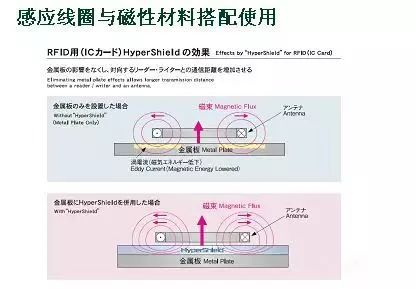
Reading Glasses,Adjustable Reading Glasses,Stylish Reading Glasses,Rimless Reading Glasses
Danyang Hengshi Optical Glasses Co., Ltd. , https://www.hengshi-optical.com